Cover
Title Page
Copyright Page
Dedication
Preface
Acknowledgments
Contents
About the Authors
part 1 Introduction to Databases
chapter 1 Databases and Database Users
1.1 Introduction
1.2 An Example
1.3 Characteristics of the Database Approach
1.4 Actors on the Scene
1.5 Workers behind the Scene
1.6 Advantages of Using the DBMS Approach
1.7 A Brief History of Database Applications
1.8 When Not to Use a DBMS
1.9 Summary
Review Questions
Exercises
Selected Bibliography
chapter 2 Database System Concepts and Architecture
2.1 Data Models, Schemas, and Instances
2.2 Three-Schema Architecture and Data Independence
2.3 Database Languages and Interfaces
2.4 The Database System Environment
2.5 Centralized and Client/Server Architectures for DBMSs
2.6 Classification of Database Management Systems
2.7 Summary
Review Questions
Exercises
Selected Bibliography
part 2 Conceptual Data Modeling and Database Design
chapter 3 Data Modeling Using the Entity–Relationship (ER) Model
3.1 Using High-Level Conceptual Data Models for Database Design
3.2 A Sample Database Application
3.3 Entity Types, Entity Sets, Attributes, and Keys
3.4 Relationship Types, Relationship Sets, Roles, and Structural Constraints
3.5 Weak Entity Types
3.6 Refining the ER Design for the COMPANY Database
3.7 ER Diagrams, Naming Conventions, and Design Issues
3.8 Example of Other Notation: UML Class Diagrams
3.9 Relationship Types of Degree Higher than Two
3.10 Another Example: A UNIVERSITY Database
3.11 Summary
Review Questions
Exercises
Laboratory Exercises
Selected Bibliography
chapter 4 The Enhanced Entity–Relationship (EER) Model
4.1 Subclasses, Superclasses, and Inheritance
4.2 Specialization and Generalization
4.3 Constraints and Characteristics of Specialization and Generalization Hierarchies
4.4 Modeling of UNION Types Using Categories
4.5 A Sample UNIVERSITY EER Schema, Design Choices, and Formal Definitions
4.6 Example of Other Notation: Representing Specialization and Generalization in UML Class Diagrams
4.7 Data Abstraction, Knowledge Representation, and Ontology Concepts
4.8 Summary
Review Questions
Exercises
Laboratory Exercises
Selected Bibliography
part 3 The Relational Data Model and SQL
chapter 5 The Relational Data Model and Relational Database Constraints
5.1 Relational Model Concepts
5.2 Relational Model Constraints and Relational Database Schemas
5.3 Update Operations, Transactions, and Dealing with Constraint Violations
5.4 Summary
Review Questions
Exercises
Selected Bibliography
chapter 6 Basic SQL
6.1 SQL Data Definition and Data Types
6.2 Specifying Constraints in SQL
6.3 Basic Retrieval Queries in SQL
6.4 INSERT, DELETE, and UPDATE Statements in SQL
6.5 Additional Features of SQL
6.6 Summary
Review Questions
Exercises
Selected Bibliography
chapter 7 More SQL: Complex Queries, Triggers, Views, and Schema Modification
7.1 More Complex SQL Retrieval Queries
7.2 Specifying Constraints as Assertions and Actions as Triggers
7.3 Views (Virtual Tables) in SQL
7.4 Schema Change Statements in SQL
7.5 Summary
Review Questions
Exercises
Selected Bibliography
chapter 8 The Relational Algebra and Relational Calculus
8.1 Unary Relational Operations: SELECT and PROJECT
8.2 Relational Algebra Operations from Set Theory
8.3 Binary Relational Operations: JOIN and DIVISION
8.4 Additional Relational Operations
8.5 Examples of Queries in Relational Algebra
8.6 The Tuple Relational Calculus
8.7 The Domain Relational Calculus
8.8 Summary
Review Questions
Exercises
Laboratory Exercises
Selected Bibliography
chapter 9 Relational Database Design by ER- and EER-to-Relational Mapping
9.1 Relational Database Design Using ER-to-Relational Mapping
9.2 Mapping EER Model Constructs to Relations
9.3 Summary
Review Questions
Exercises
Laboratory Exercises
Selected Bibliography
part 4 Database Programming Techniques
chapter 10 Introduction to SQL Programming Techniques
10.1 Overview of Database Programming Techniques and Issues
10.2 Embedded SQL, Dynamic SQL, and SQLJ
10.3 Database Programming with Function Calls and Class Libraries: SQL/CLI and JDBC
10.4 Database Stored Procedures and SQL/PSM
10.5 Comparing the Three Approaches
10.6 Summary
Review Questions
Exercises
Selected Bibliography
chapter 11 Web Database Programming Using PHP
11.1 A Simple PHP Example
11.2 Overview of Basic Features of PHP
11.3 Overview of PHP Database Programming
11.4 Brief Overview of Java Technologies for Database Web Programming
11.5 Summary
Review Questions
Exercises
Selected Bibliography
part 5 Object, Object-Relational, and XML: Concepts, Models, Languages, and Standards
chapter 12 Object and Object-Relational Databases
12.1 Overview of Object Database Concepts
12.2 Object Database Extensions to SQL
12.3 The ODMG Object Model and the Object Definition Language ODL
12.4 Object Database Conceptual Design
12.5 The Object Query Language OQL
12.6 Overview of the C++ Language Binding in the ODMG Standard
12.7 Summary
Review Questions
Exercises
Selected Bibliography
chapter 13 XML: Extensible Markup Language
13.1 Structured, Semistructured, and Unstructured Data
13.2 XML Hierarchical (Tree) Data Model
13.3 XML Documents, DTD, and XML Schema
13.4 Storing and Extracting XML Documents from Databases
13.5 XML Languages
13.6 Extracting XML Documents from Relational Databases
13.7 XML/SQL: SQL Functions for Creating XML Data
13.8 Summary
Review Questions
Exercises
Selected Bibliography
part 6 Database Design Theory and Normalization
chapter 14 Basics of Functional Dependencies and Normalization for Relational Databases
14.1 Informal Design Guidelines for Relation Schemas
14.2 Functional Dependencies
14.3 Normal Forms Based on Primary Keys
14.4 General Definitions of Second and Third Normal Forms
14.5 Boyce-Codd Normal Form
14.6 Multivalued Dependency and Fourth Normal Form
14.7 Join Dependencies and Fifth Normal Form
14.8 Summary
Review Questions
Exercises
Laboratory Exercises
Selected Bibliography
chapter 15 Relational Database Design Algorithms and Further Dependencies
15.1 Further Topics in Functional Dependencies: Inference Rules, Equivalence, and Minimal Cover
15.2 Properties of Relational Decompositions
15.3 Algorithms for Relational Database Schema Design
15.4 About Nulls, Dangling Tuples, and Alternative Relational Designs
15.5 Further Discussion of Multivalued Dependencies and 4NF
15.6 Other Dependencies and Normal Forms
15.7 Summary
Review Questions
Exercises
Laboratory Exercises
Selected Bibliography
part 7 File Structures, Hashing, Indexing, and Physical Database Design
chapter 16 Disk Storage, Basic File Structures, Hashing, and Modern Storage Architectures
16.1 Introduction
16.2 Secondary Storage Devices
16.3 Buffering of Blocks
16.4 Placing File Records on Disk
16.5 Operations on Files
16.6 Files of Unordered Records (Heap Files)
16.7 Files of Ordered Records (Sorted Files)
16.8 Hashing Techniques
16.9 Other Primary File Organizations
16.10 Parallelizing Disk Access Using RAID Technology
16.11 Modern Storage Architectures
16.12 Summary
Review Questions
Exercises
Selected Bibliography
chapter 17 Indexing Structures for Files and Physical Database Design
17.1 Types of Single-Level Ordered Indexes
17.2 Multilevel Indexes
17.3 Dynamic Multilevel Indexes Using B-Trees and B+-Trees
17.4 Indexes on Multiple Keys
17.5 Other Types of Indexes
17.6 Some General Issues Concerning Indexing
17.7 Physical Database Design in Relational Databases
17.8 Summary
Review Questions
Exercises
Selected Bibliography
part 8 Query Processing and Optimization
chapter 18 Strategies for Query Processing
18.1 Translating SQL Queries into Relational Algebra and Other Operators
18.2 Algorithms for External Sorting
18.3 Algorithms for SELECT Operation
18.4 Implementing the JOIN Operation
18.5 Algorithms for PROJECT and Set Operations
18.6 Implementing Aggregate Operations and Different Types of JOINs
18.7 Combining Operations Using Pipelining
18.8 Parallel Algorithms for Query Processing
18.9 Summary
Review Questions
Exercises
Selected Bibliography
chapter 19 Query Optimization
19.1 Query Trees and Heuristics for Query Optimization
19.2 Choice of Query Execution Plans
19.3 Use of Selectivities in Cost-Based Optimization
19.4 Cost Functions for SELECT Operation
19.5 Cost Functions for the JOIN Operation
19.6 Example to Illustrate Cost-Based Query Optimization
19.7 Additional Issues Related to Query Optimization
19.8 An Example of Query Optimization in Data Warehouses
19.9 Overview of Query Optimization in Oracle
19.10 Semantic Query Optimization
19.11 Summary
Review Questions
Exercises
Selected Bibliography
part 9 Transaction Processing, Concurrency Control, and Recovery
chapter 20 Introduction to Transaction Processing Concepts and Theory
20.1 Introduction to Transaction Processing
20.2 Transaction and System Concepts
20.3 Desirable Properties of Transactions
20.4 Characterizing Schedules Based on Recoverability
20.5 Characterizing Schedules Based on Serializability
20.6 Transaction Support in SQL
20.7 Summary
Review Questions
Exercises
Selected Bibliography
chapter 21 Concurrency Control Techniques
21.1 Two-Phase Locking Techniques for Concurrency Control
21.2 Concurrency Control Based on Timestamp Ordering
21.3 Multiversion Concurrency Control Techniques
21.4 Validation (Optimistic) Techniques and Snapshot Isolation Concurrency Control
21.5 Granularity of Data Items and Multiple Granularity Locking
21.6 Using Locks for Concurrency Control in Indexes
21.7 Other Concurrency Control Issues
21.8 Summary
Review Questions
Exercises
Selected Bibliography
chapter 22 Database Recovery Techniques
22.1 Recovery Concepts
22.2 NO-UNDO/REDO Recovery Based on Deferred Update
22.3 Recovery Techniques Based on Immediate Update
22.4 Shadow Paging
22.5 The ARIES Recovery Algorithm
22.6 Recovery in Multidatabase Systems
22.7 Database Backup and Recovery from Catastrophic Failures
22.8 Summary
Review Questions
Exercises
Selected Bibliography
part 10 Distributed Databases, NOSQL Systems, and Big Data
chapter 23 Distributed Database Concepts
23.1 Distributed Database Concepts
23.2 Data Fragmentation, Replication, and Allocation Techniques for Distributed Database Design
23.3 Overview of Concurrency Control and Recovery in Distributed Databases
23.4 Overview of Transaction Management in Distributed Databases
23.5 Query Processing and Optimization in Distributed Databases
23.6 Types of Distributed Database Systems
23.7 Distributed Database Architectures
23.8 Distributed Catalog Management
23.9 Summary
Review Questions
Exercises
Selected Bibliography
chapter 24 NOSQL Databases and Big Data Storage Systems
24.1 Introduction to NOSQL Systems
24.2 The CAP Theorem
24.3 Document-Based NOSQL Systems and MongoDB
24.4 NOSQL Key-Value Stores
24.5 Column-Based or Wide Column NOSQL Systems
24.6 NOSQL Graph Databases and Neo4j
24.7 Summary
Review Questions
Selected Bibliography
chapter 25 Big Data Technologies Based on MapReduce and Hadoop
25.1 What Is Big Data?
25.2 Introduction to MapReduce and Hadoop
25.3 Hadoop Distributed File System (HDFS)
25.4 MapReduce: Additional Details
25.5 Hadoop v2 alias YARN
25.6 General Discussion
25.7 Summary
Review Questions
Selected Bibliography
part 11 Advanced Database Models, Systems, and Applications
chapter 26 Enhanced Data Models: Introduction to Active, Temporal, Spatial, Multimedia, and Deductive Databases
26.1 Active Database Concepts and Triggers
26.2 Temporal Database Concepts
26.3 Spatial Database Concepts
26.4 Multimedia Database Concepts
26.5 Introduction to Deductive Databases
26.6 Summary
Review Questions
Exercises
Selected Bibliography
chapter 27 Introduction to Information Retrieval and Web Search
27.1 Information Retrieval (IR) Concepts
27.2 Retrieval Models
27.3 Types of Queries in IR Systems
27.4 Text Preprocessing
27.5 Inverted Indexing
27.6 Evaluation Measures of Search Relevance
27.7 Web Search and Analysis
27.8 Trends in Information Retrieval
27.9 Summary
Review Questions
Selected Bibliography
chapter 28 Data Mining Concepts
28.1 Overview of Data Mining Technology
28.2 Association Rules
28.3 Classification
28.4 Clustering
28.5 Approaches to Other Data Mining Problems
28.6 Applications of Data Mining
28.7 Commercial Data Mining Tools
28.8 Summary
Review Questions
Exercises
Selected Bibliography
chapter 29 Overview of Data Warehousing and OLAP
29.1 Introduction, Definitions, and Terminology
29.2 Characteristics of Data Warehouses
29.3 Data Modeling for Data Warehouses
29.4 Building a Data Warehouse
29.5 Typical Functionality of a Data Warehouse
29.6 Data Warehouse versus Views
29.7 Difficulties of Implementing Data Warehouses
29.8 Summary
Review Questions
Selected Bibliography
part 12 Additional Database Topics: Security
chapter 30 Database Security
30.1 Introduction to Database Security Issues
30.2 Discretionary Access Control Based on Granting and Revoking Privileges
30.3 Mandatory Access Control and Role-Based Access Control for Multilevel Security
30.4 SQL Injection
30.5 Introduction to Statistical Database Security
30.6 Introduction to Flow Control
30.7 Encryption and Public Key Infrastructures
30.8 Privacy Issues and Preservation
30.9 Challenges to Maintaining Database Security
30.10 Oracle Label-Based Security
30.11 Summary
Review Questions
Exercises
Selected Bibliography
appendix A Alternative Diagrammatic Notations for ER Models
appendix B Parameters of Disks
appendix C Overview of the QBE Language
C.1 Basic Retrievals in QBE
C.2 Grouping, Aggregation, and Database Modification in QBE
Selected Bibliography
Index
A
B
C
D
E
F
G
H
I
J
K
L
M
N
O
P
Q
R
S
T
U
V
W
X
Y
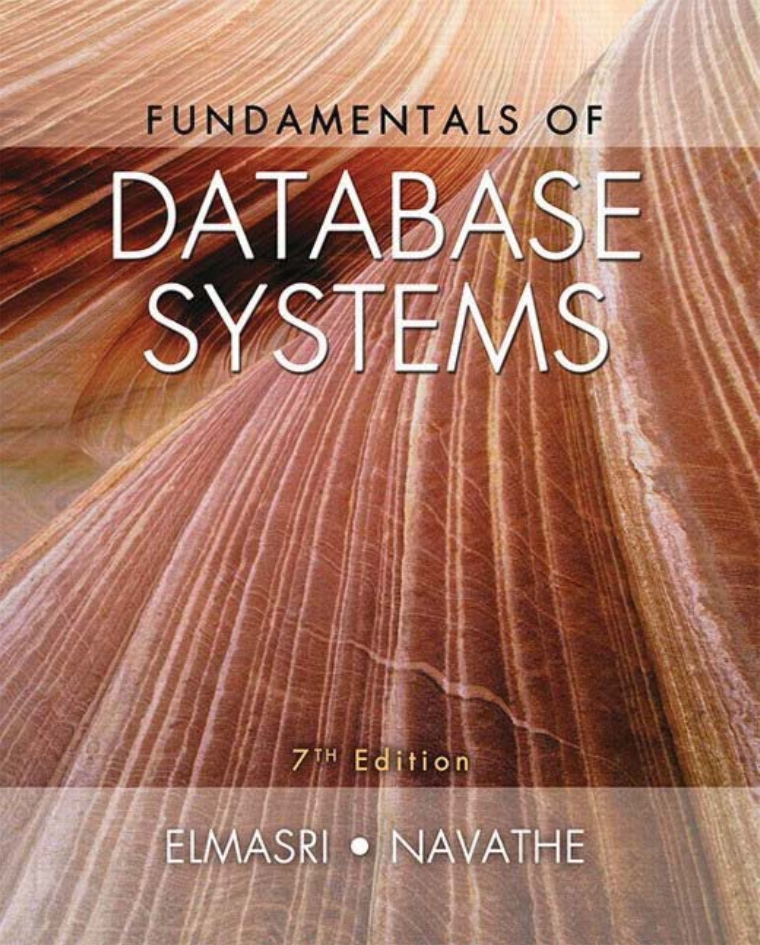
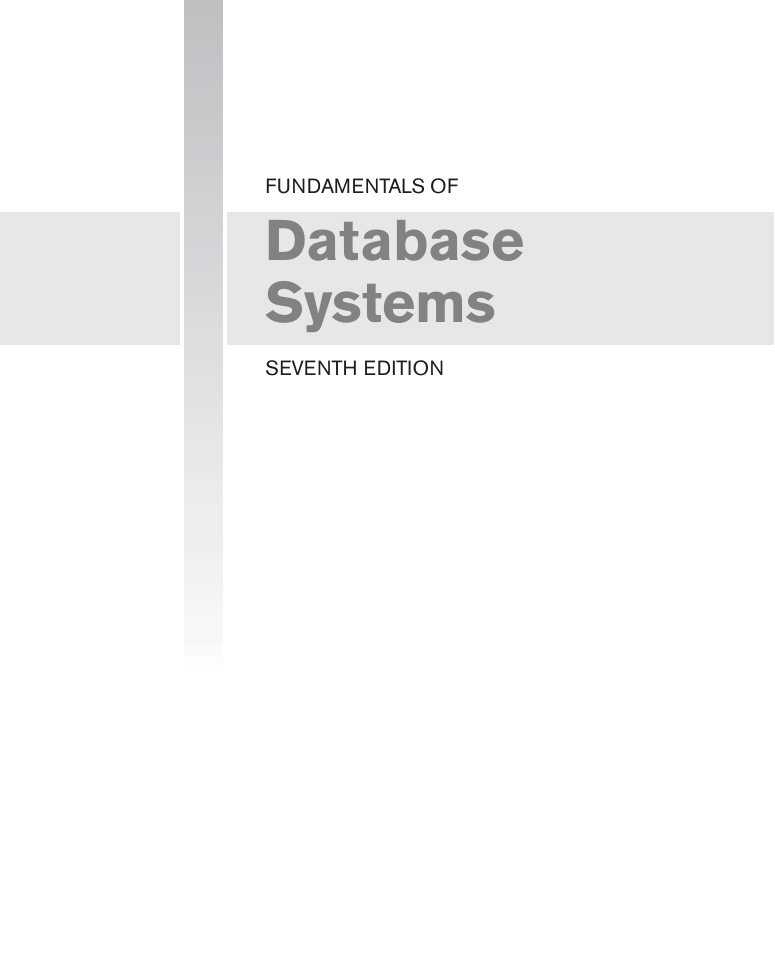

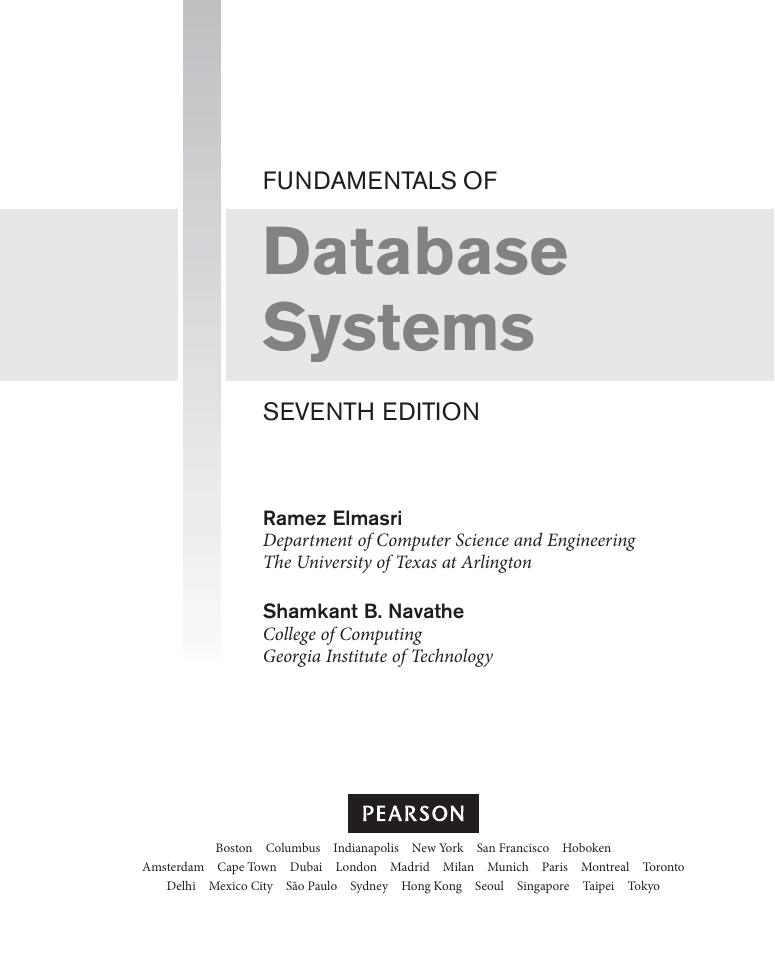
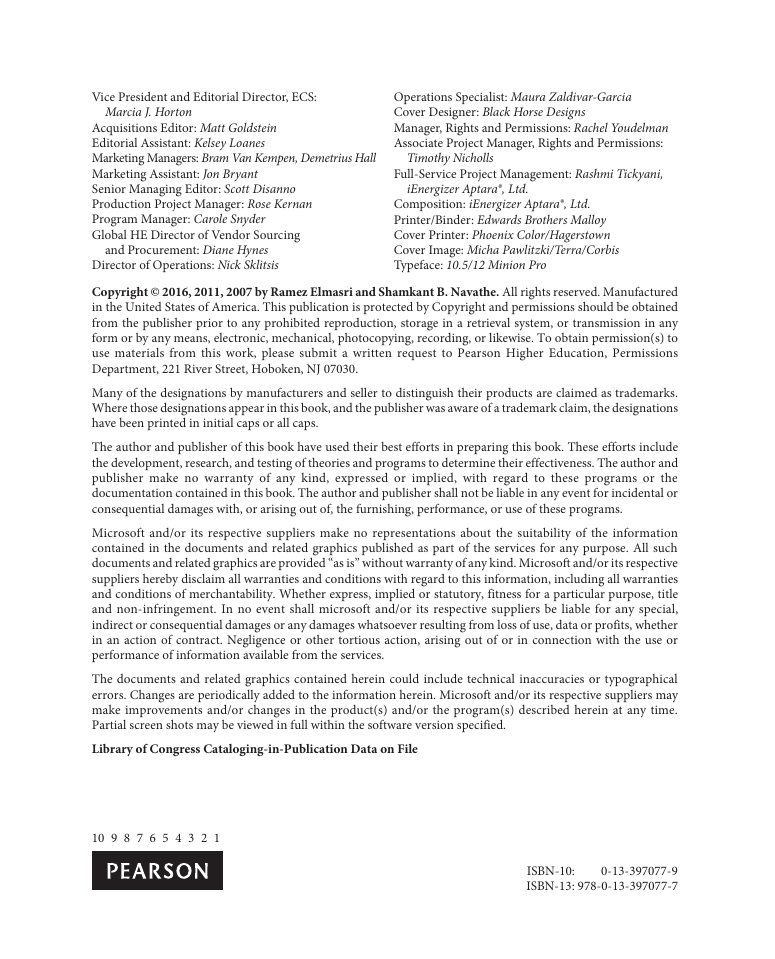
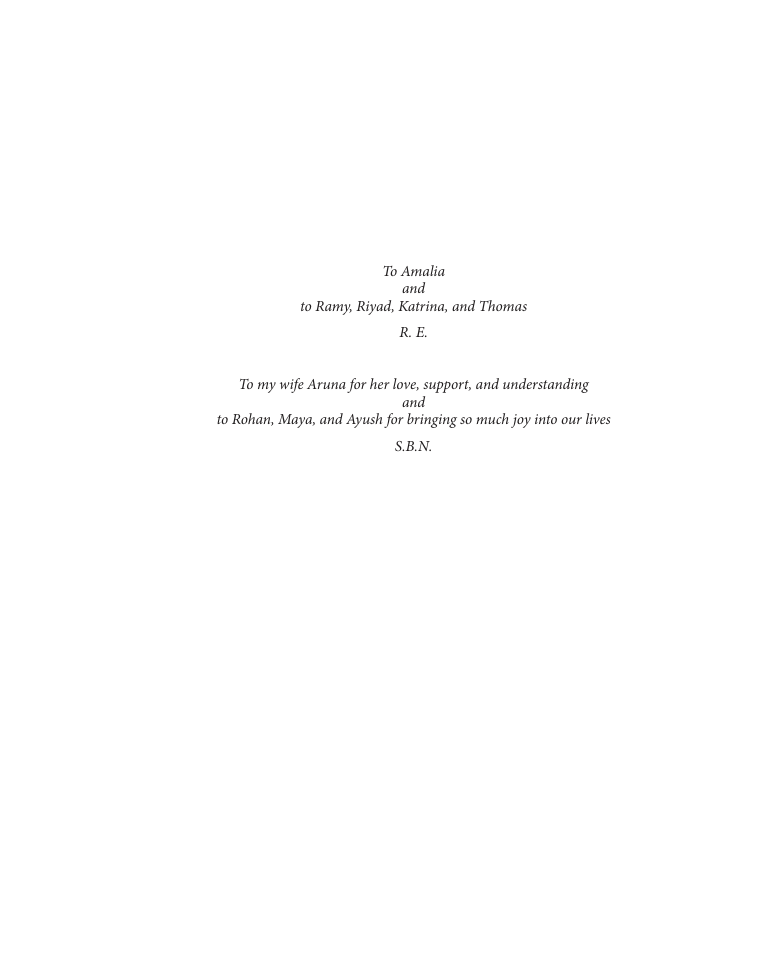

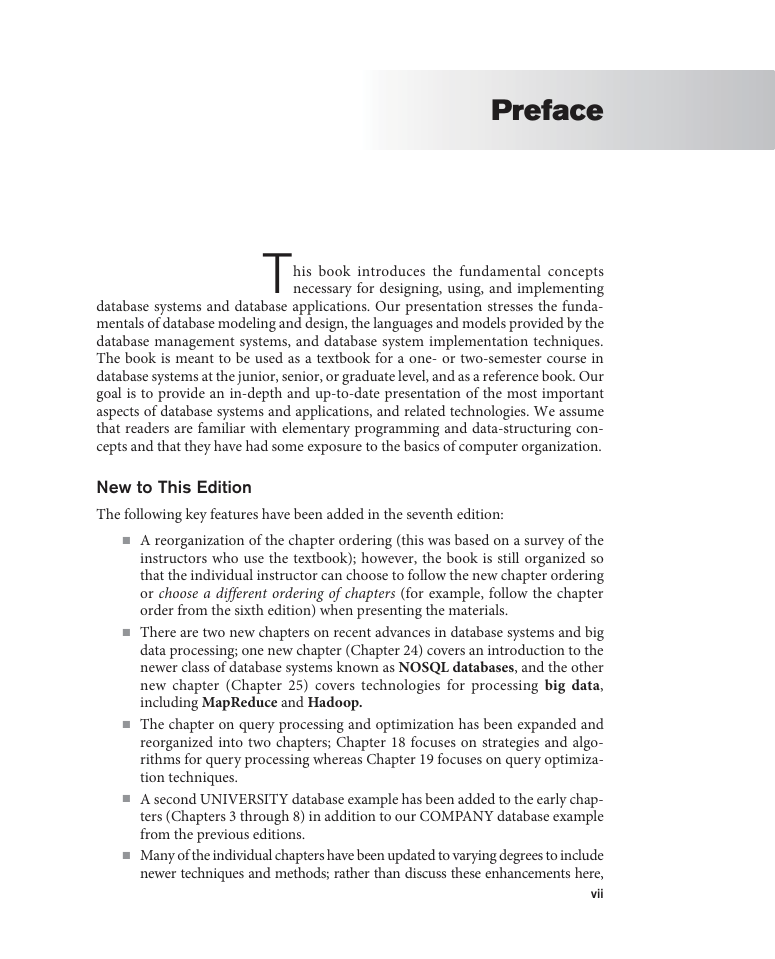








 2023年江西萍乡中考道德与法治真题及答案.doc
2023年江西萍乡中考道德与法治真题及答案.doc 2012年重庆南川中考生物真题及答案.doc
2012年重庆南川中考生物真题及答案.doc 2013年江西师范大学地理学综合及文艺理论基础考研真题.doc
2013年江西师范大学地理学综合及文艺理论基础考研真题.doc 2020年四川甘孜小升初语文真题及答案I卷.doc
2020年四川甘孜小升初语文真题及答案I卷.doc 2020年注册岩土工程师专业基础考试真题及答案.doc
2020年注册岩土工程师专业基础考试真题及答案.doc 2023-2024学年福建省厦门市九年级上学期数学月考试题及答案.doc
2023-2024学年福建省厦门市九年级上学期数学月考试题及答案.doc 2021-2022学年辽宁省沈阳市大东区九年级上学期语文期末试题及答案.doc
2021-2022学年辽宁省沈阳市大东区九年级上学期语文期末试题及答案.doc 2022-2023学年北京东城区初三第一学期物理期末试卷及答案.doc
2022-2023学年北京东城区初三第一学期物理期末试卷及答案.doc 2018上半年江西教师资格初中地理学科知识与教学能力真题及答案.doc
2018上半年江西教师资格初中地理学科知识与教学能力真题及答案.doc 2012年河北国家公务员申论考试真题及答案-省级.doc
2012年河北国家公务员申论考试真题及答案-省级.doc 2020-2021学年江苏省扬州市江都区邵樊片九年级上学期数学第一次质量检测试题及答案.doc
2020-2021学年江苏省扬州市江都区邵樊片九年级上学期数学第一次质量检测试题及答案.doc 2022下半年黑龙江教师资格证中学综合素质真题及答案.doc
2022下半年黑龙江教师资格证中学综合素质真题及答案.doc